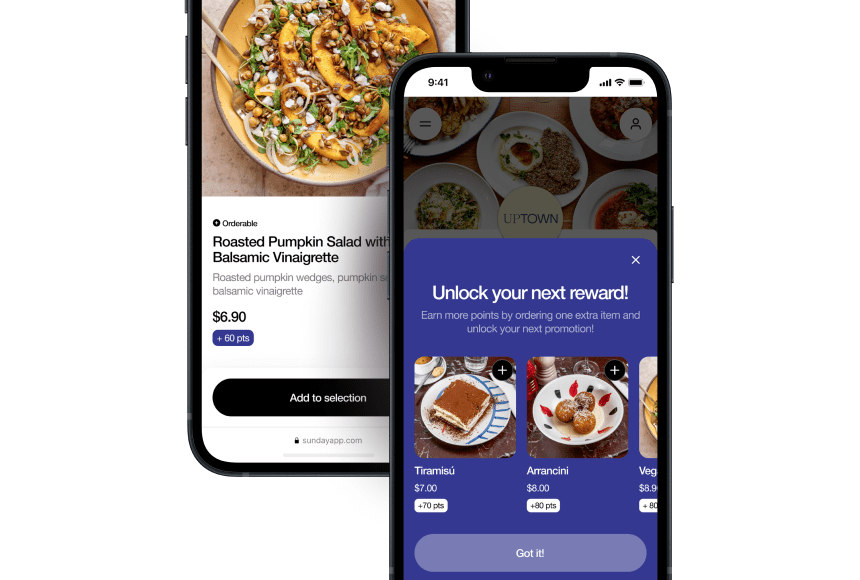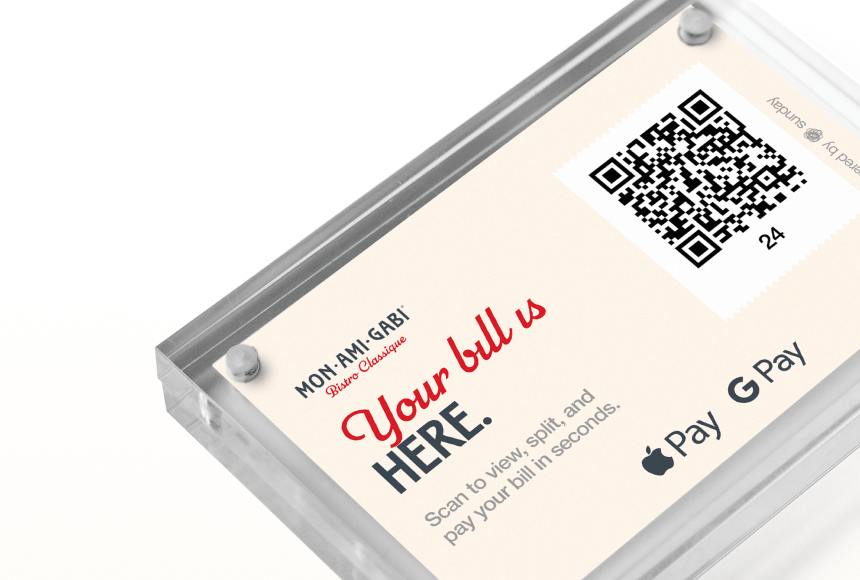
How to Tell If It’s Time for a Modern Payment Terminal in Your Restaurant
Why Your Payment Terminal Matters More Than You Think
If you run a restaurant, you probably wear more hats than a sous chef prepping for dinner service. You manage your team, design menus, oversee inventory, deal with customer feedback, and try to keep your kitchen running like a well-oiled machine. In the midst of all that chaos, your payment terminal might feel like just another piece of hardware—like the ovens in your kitchen or the tables in your dining room.
But here’s the thing: your payment terminal is often the final touchpoint of the dining experience. Hand your customer a slow or malfunctioning device, and that delightful meal can leave a sour aftertaste. Give them a sleek, speedy way to pay, and you send them off with a positive impression. As the National Restaurant Association (source) emphasizes, customer satisfaction is a holistic experience that starts at the front door and follows through to the very last transaction.
So, how do you know when it’s time to consider investing in a new payment terminal? Below, we’ll dive into five telltale signs your current solution isn’t cutting it and could be affecting your bottom line. Throughout this article, we’ll also reference an example scenario—let’s call it “Rosewood Bistro”—to illustrate these points in real life. Once you spot these signs in your own establishment, you’ll be ready to decide if an upgrade is in order.
1. Payments Are Taking Too Long
Picture this: It’s Saturday night, and Rosewood Bistro is buzzing. Tables are full, servers are juggling orders, and the kitchen is in full swing. But the line at the cash register is crawling. Customers are fidgeting with their cards, the server is re-inserting the chip, and the device is beeping angrily. By the time the payment goes through, a solid minute has passed—multiply that by several diners per hour, and you have an unnecessary bottleneck.
Prolonged payment times create friction in an environment where convenience and speed matter. Diners want to settle their bills promptly—especially if they’re heading to a show, returning to work, or meeting friends. When payments drag on, you risk not only frustrating guests but also losing precious table turnover rate.
Common causes of slow payment processing include:
- Outdated terminal hardware unable to handle modern software requirements.
- Poor network connectivity or broadband issues.
- Frequent software glitches, requiring reboots at the worst moments.
- Limited features that force staff to enter tips or custom charges manually.
If your servers or staff are spending an increasing amount of time trouble-shooting, it’s likely time to replace your terminal. Modern payment systems can process transactions more quickly, accept multiple card types (including contactless), and often integrate seamlessly with online ordering and delivery platforms. Some even allow for QR code scanning for a no-contact payment experience—one of the features offered by sunday.
A quick point to remember: Faster payment processing not only saves time for you and your staff, but it helps keep guests smiling as they head out the door. Speed matters, and a modern terminal can deliver exactly that.
2. You’re Constantly Facing Technical Glitches and Downtime
Businesses like Rosewood Bistro can’t afford to accept “system down” as a daily norm. If your current terminal either crashes unexpectedly or requires constant maintenance, you lose more than time—you lose revenue when customers can’t pay, and you risk losing trust if these outages happen often. Let’s break it down:
- System Freezes: Your server is trying to close out a table, the card is inserted, and the screen stops responding. Not only do you have a flustered server, but you also have annoyed customers.
- Software Incompatibility: Does your device reject updates or freeze when you install new features? It could be that the payment terminal’s operating system is outdated.
- Connectivity Failures: In an era of cloud-based point-of-sale (POS) systems, losing network connectivity can become catastrophic if your terminal doesn’t reconnect automatically or handle offline transactions gracefully.
Another important factor: consistent downtime can compromise accurate tracking of sales, tips, and taxes. If the terminal goes offline at peak hours, it’s easy to misplace orders or process them manually. Later, reconciliations turn into a guessing game, leading to potential accounting and compliance headaches.
Modern payment solutions typically come with robust support, better hardware, and advanced software designed to minimize downtime. Some services even provide real-time monitoring and remote troubleshooting, so you can reduce costly disruptions.
3. You’re Falling Behind on Security and Compliance
How many times have you come across news headlines about credit card data breaches or hacks? Secure payment infrastructure is no joke. If your hardware or software is outdated, you might be failing to meet the latest Payment Card Industry Data Security Standard (PCI DSS). According to a data security report from Verizon, the restaurant sector remains a frequent target for cybercriminals because of the sheer volume of financial transactions processed daily.
Signs your terminal might not be secure enough:
- Lack of Regular Updates: If your vendor isn’t pushing periodic security patches.
- Inadequate Encryption: If the device doesn’t encrypt data from the moment it’s inserted or swiped, your business could be exposed to vulnerabilities.
- PCI Non-Compliance: If you haven’t passed a PCI compliance check recently, it’s time to investigate.
In an age where trust is everything, you don’t want your restaurant’s reputation at stake. Ensuring your payment terminal lines up with the latest security requirements protects not only your diners’ data but also your own standing in the community. Rosewood Bistro adopted a modern terminal that automatically installed mandatory updates at off-peak hours, reducing any risk of vulnerabilities slipping through the cracks. The result: No major compliance scares, no panic about downtime, and peace of mind for both management and patrons.
4. Your Customers (and Team) Want More Payment Options
Restaurants aren’t just competing on flavor these days—they’re also vying for the most convenient customer experience. Offering multiple payment methods can be the difference between making a sale and turning a patron away. In addition to supporting magnetic stripe cards and chip-and-PIN, many of today’s diners expect:
- Contactless Payments: Tap-to-pay or NFC (Near Field Communication) solutions like Apple Pay, Google Pay, and digital wallets.
- QR Code Scanning: A frictionless way to pay, often by scanning a code displayed on the check, the table, or a device. This method is particularly helpful if you run a busy environment or want to minimize contact with physical surfaces.
- Online Payment Links: If you offer delivery, takeout, or catering services, some customers might pay via a secure link sent by text or email.
Here’s a scenario: A group of tech-savvy foodie tourists visits Rosewood Bistro. They try to tap their phones to pay. The terminal doesn’t accept contactless transactions, so they fumble around for cards, coins, or even cash. At that moment, your restaurant misses the chance to stand out as a modern, guest-friendly choice.
Lack of payment options can also stress out your team. Servers might worry about incorrectly entering a split bill, or bartenders might be forced to manually re-add items if someone wants to pay with an e-wallet. A new terminal with integrated features can simplify these tasks, allowing staff to handle requests swiftly and accurately.
A side benefit: If your new payment solution includes tip prompts, you might notice a boost in tips. Many guests prefer a convenient option that suggests a standard gratuity, especially when paying with contactless or via QR code. Both servers and managers benefit from this streamlined approach, as it makes tip distribution more transparent.
5. Your Terminal Lacks Integrations and Data Insights
Let’s talk about business intelligence. When it comes to running a restaurant, knowledge can give you more power than the perfect marinade. A modern payment terminal can contribute valuable data to your restaurant management system, back-of-house analytics, and even customer relationship management tools. If your terminal merely processes transactions and spits out a receipt, you’re probably missing out on important insights.
If you can integrate your payment solution with inventory, loyalty, online ordering, or table reservation systems, you can track sales in real time, manage invoices more accurately, and even see patterns in customer behavior. For example, you might discover that your craft cocktail menu is most popular on Thursdays, or that brunch traffic surges after a social media promotion. By consolidating these insights, you can adjust ordering, staffing, and menu design to optimize revenue.
At Rosewood Bistro, integrating a new payment terminal meant linking point-of-sale data to daily inventory logs. This enabled the owners to see exactly which ingredient was being used at what rate—so they never again ran out of their signature homemade ravioli at peak dinner hours. Moreover, their staff appreciated the automatic synergy between the payment system and scheduling software, saving them the headache of compiling time-intensive end-of-shift reports.
A few advanced features you might want to look for in a modern terminal:
- Real-time analytics: Check daily or hourly sales and compare historical trends.
- Tip tracking: Automates tip pooling and distribution across front-of-house staff.
- Guest feedback prompts: Encourage satisfied diners to leave a quick review on Google, Yelp, or a designated platform.
- Automatic inventory sync: No more manual counting or guesswork—sale data instantly updates your inventory system.
In an industry where margins can be thin and every second counts, why not give yourself the gift of visibility?
Comparing Old vs. New: A Quick Glance
| Feature | Older Terminal | Modern Terminal |
|---|---|---|
| Speed | Occasional Lag | Instant Authorization |
| Payment Options | Card-Only | Contactless, QR, Mobile Wallets |
| Security | Minimal | Advanced Encryption & PCI Compliance |
| Integration | Standalone | POS, Online Ordering, Inventory Sync |
| Downtime | Frequent | Rare, with Remote Support |
A Real-World Mini Case Study: Rosewood Bistro’s Upgrade Journey
Throughout this article, we touched on Rosewood Bistro. Let’s detail their upgrade journey:
- The Problem: They were using a 10-year-old terminal that often froze, had limited payment options, and required constant manual updates.
- The Change: After a prolonged system outage left diners waiting in line, the owners decided to invest in a modern payment terminal that included contactless payments, tip prompts, and real-time analytics.
- The Impact: Rosewood noticed a 15% decrease in average customer wait time to pay. Servers found their workflow smoother, the kitchen staff got real-time inventory updates, and managers had fewer headaches dealing with daily settlements. They even integrated a feature that lets customers scan a QR code to pay at the table, leave a tip, and be on their way—no more waiting for the busy server to return. As a bonus, their Google reviews consistently commend speedy checkout and top-notch service.
- The Lesson: Investing in modern payment technology can revitalize the guest experience, boost your staff’s morale, and improve your overall operations.
Beyond Hardware: Why a Broader Payment Solution May Make Sense
A modern payment solution is about much more than just swapping old devices for new ones. If you’re looking at upgrading, consider a service that handles multiple sides of payment, such as:
- QR Code Payments: Diners scan and pay within seconds, with the option to add a tip or split the bill seamlessly.
- Marketing Integrations: Encourage satisfied customers to leave a Google review right after they pay.
- Holistic Customer Support: 24/7 phone or chat assistance can be a lifesaver if something goes wrong mid-shift.
- Cloud-Based Insights: Access your sales data from any device, any time.
One example is sunday, a dynamic payment solution that focuses on a frictionless central hub for modern restaurants. Not only does it streamline the payment process with QR codes, but it also offers optional features like tipping prompts. The idea is to free up your front-of-house staff so they can focus on hospitality, not wrestling with technology.
Integrating a broader solution can also prevent fragmentation. Instead of juggling multiple pieces of software for your POS, delivery orders, reservation platform, and payment terminal, you can unify everything under one dashboard. This saves time, reduces errors, and helps you make better decisions with comprehensive data at your fingertips.
When to Make the Investment
You may be thinking: “Upgrading is expensive. Is it really worth it?” The answer depends on how these pain points affect you. If you’ve noticed the elements below, it may be time to seriously consider an upgrade:
- Customer Complaints: Are guests complaining about slow payments or lacking a preferred payment method?
- Increasing Downtime: Are you losing business due to system failures?
- Security Gaps: Does your older terminal pass the latest compliance checks with flying colors?
- Staff Frustration: Are your employees regularly battling technical glitches instead of focusing on serving guests?
- Growth Goals: Are you planning expansions—new branches, online ordering, or loyalty programs—where an outdated terminal may become a roadblock?
A short-term investment in a new terminal can spur long-term returns by improving table turnover, reducing staff errors, and bolstering customer satisfaction. In a highly competitive market, standing out doesn’t always mean adding more items to your menu; sometimes it’s as simple as making payment stress-free.
FAQ: Common Questions from Restaurant Owners
How do I choose the right payment terminal for my specific restaurant?
First, assess your most pressing needs—faster transactions, advanced security, multi-payment options, or data insights. A quick conversation with potential vendors can help you pinpoint devices and solutions that check all the boxes. Don’t just compare price; consider customer service, ease of integration with your POS, and the availability of features like QR code payments.
Is it difficult to train staff on a new system?
Not necessarily. Modern payment terminals are generally intuitive and come with user-friendly interfaces. Most vendors offer quick tutorials or on-site demos. Given the ease of use, your employees might actually prefer the upgraded system after an initial training. Aim to schedule training sessions during slower hours or in short segments, so your team can get hands-on practice without pressure.
Will I have to change my entire POS if I upgrade my terminal?
It depends on the terminal and your existing set-up. Many modern terminals are designed for seamless integration with popular POS systems. Look for solutions that support “plug-and-play” integration to avoid the complexity of fully replacing your POS. If an upgrade requires bigger changes, focus on the long-term benefits, like smoother operations, advanced analytics, and better customer experiences.
How do I ensure compliance and security with a new terminal?
Most reputable terminal providers adhere to PCI DSS guidelines and undergo regular audits. Be proactive: enable automatic updates, use strong passwords, restrict access to sensitive data, and train your staff on safe payment handling practices. If you’re unsure, request documentation from the vendor detailing how they meet current security and compliance requirements.
What’s the cost range for upgrading?
The cost can vary widely, from a few hundred dollars for a basic model to a more substantial sum for an all-in-one payment solution that includes analytics, advanced security, and robust support. Some providers offer monthly rental or subscription plans, which can help you manage upfront costs. It’s best to weigh the immediate investment against ongoing benefits like saved time, higher customer satisfaction, and potential increases in tips and repeat business.
A Final Word on Embracing the Future
As a restaurant owner, you know the dining industry thrives on delivering an outstanding experience—delicious food, welcoming ambiance, and excellent service. A modern payment terminal or an updated payment solution might sound like a background detail in that grand scheme of hospitality. But for many guests, it can be the clincher that confirms they never want to dine anywhere else. Streamlined technology translates to happy diners, faster table turnover, and a more confident, empowered staff.
Ultimately, you want your restaurant to be a place where customers can savor every bite without fretting over cumbersome transactions. Now that you’ve seen some of the red flags—slow processing, frequent downtime, security risks, limited payment methods, and a lack of data insights—take a moment to think about your own setup. If you find those warning signs apply to you, a new payment terminal might be the missing ingredient for a more efficient, secure, and profitable kitchen-to-table experience.
Find out more today
Drop us your details below and we’ll reach out within the next 24h
The payment terminal to make your operation simpler.
Connected to your POS, we offer the only payment terminal specifically designed for restaurants.




